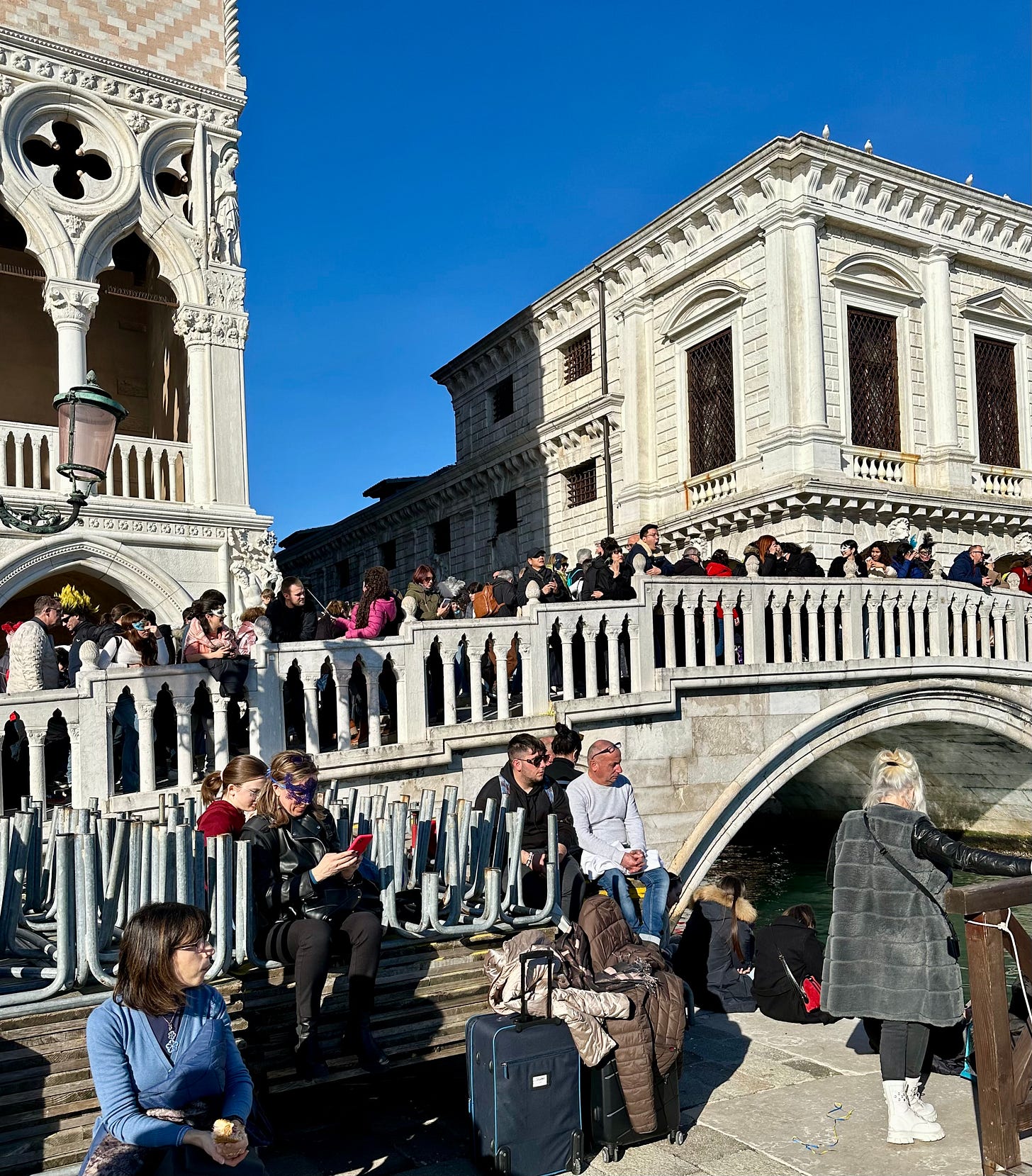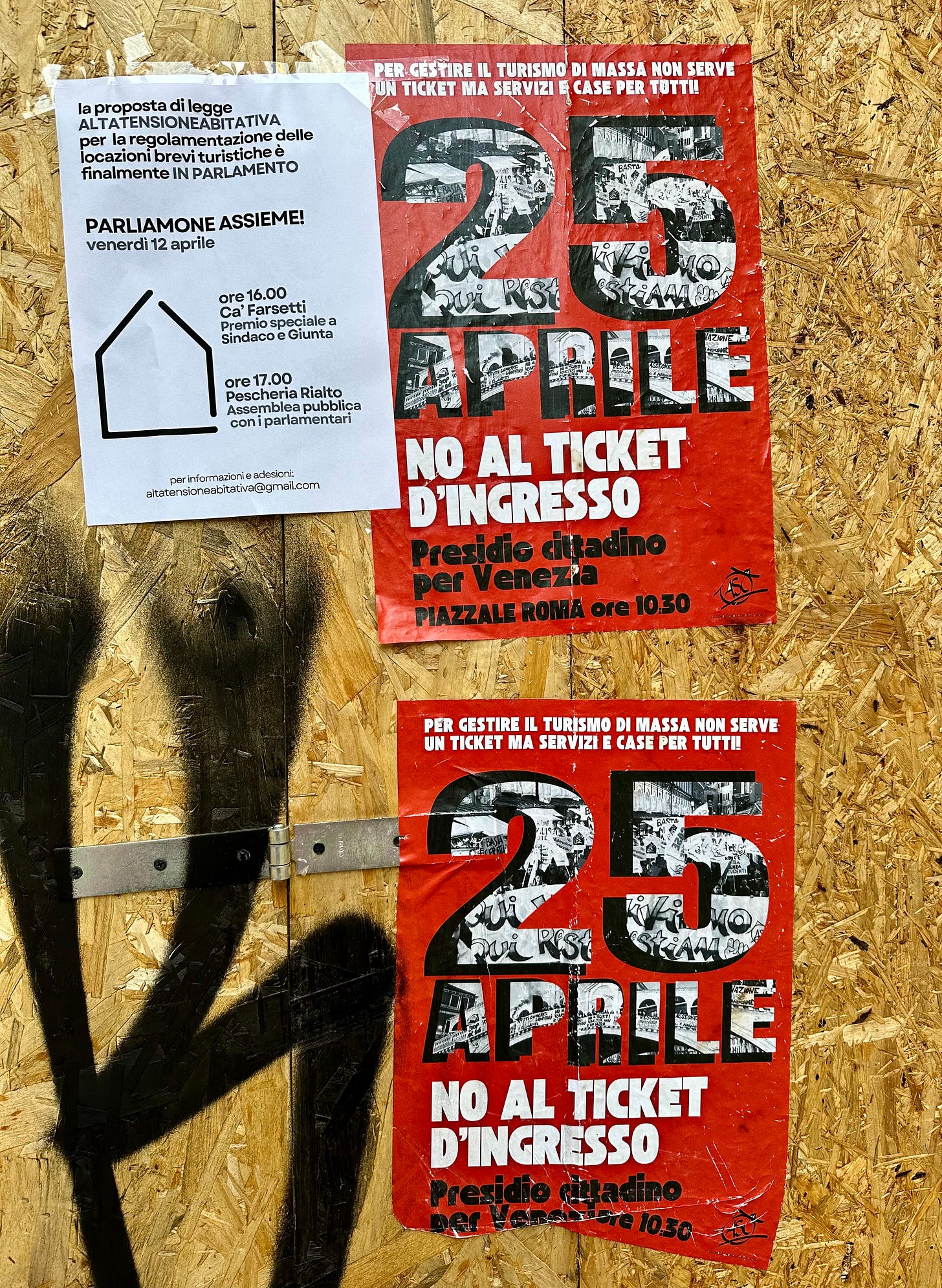Today the Venice Access Fee system begins.1 I predict chaos and confusion. I am mortified and angry that there will be physical barriers at the train station and Piazzale Roma and staff to check for registration and QR codes (and to issue fines!) before people can enter a city that is both one of the world’s greatest treasures and also just a place where people live and work. My opinion is that this is a bandaid that completely sidesteps the real issues. Tourism is not a bad thing. My livelihood depends on it. Between 5 to 13 percent of Italy’s economy depends on it. Italy is the 5th most visited country in the world. One thing I really noticed in Palermo2 a few months ago was how balanced it felt. I know. It was late February/early March. But. It was fun. We stayed in a well priced hotel on the via Vittorio Emmanuele. Streets and restaurants were busy, there were plenty of those icky tourist shops selling silly things like badly made tote bags stamped with SICILY on the side, socks with The Godfather on them, and lines of those adorable Ape taxis hawking tours (I kind of wish we had done one.) And. The only place we waited in line was on a Sunday afternoon at the “secret” cannoli cloister. It was easy to be a tourist there. Nothing we did felt extractive or that our presence was displacing or disrupting a resident.
The maximum number of people who can visit it without causing the destruction of the physical, economic or socio-cultural environment? Venice could safely hold 40,250 visitors per day, of which 37,000 overnight visitors and 3,250 day trippers. In a year it would be a total of 14,691,250 attendances of which 13,505,000 overnight tourists and only 1,186,250 day trippers. Jan van der Borg
Back to tourism in Venice. Here are some numbers to consider. The number of beds for tourists (49,693) exceeds that of residents (49.304.) Tourist visitor numbers are somewhere between 28 and 30 million per year. The Farmacie Morelli near the Rialto bridge and the Marco Polo used bookstore in Campo Santa Margherita both have clocks in their window with a live count of tourist beds vs residents. Most of the news stories you read focus on the chasm between those two numbers and declare that the city is dying. In Piazza San Marco and near Rialto the “guardians” in their white vests printed with #enjoyrespectvenice have returned. Until November 3 they will make sure people don’t sit down/picnic on the steps or passarelle (the elevated walkways we use when the water is high.) There will be news stories of visitors climbing on statues and eating entire meals on the steps of monuments.3 Of course the reality is more complicated. 4 Venice is very much alive, but it is hard to see or feel that because the noisy kind of tourism drowns out the good things that are happening. Things like a very cool natural wine scene and young artisans making beautiful things.
Are you coming to Italy this summer or are you waiting for a quieter time of year? Do you have questions about how to visit Venice gently? Ask me in the comments.





